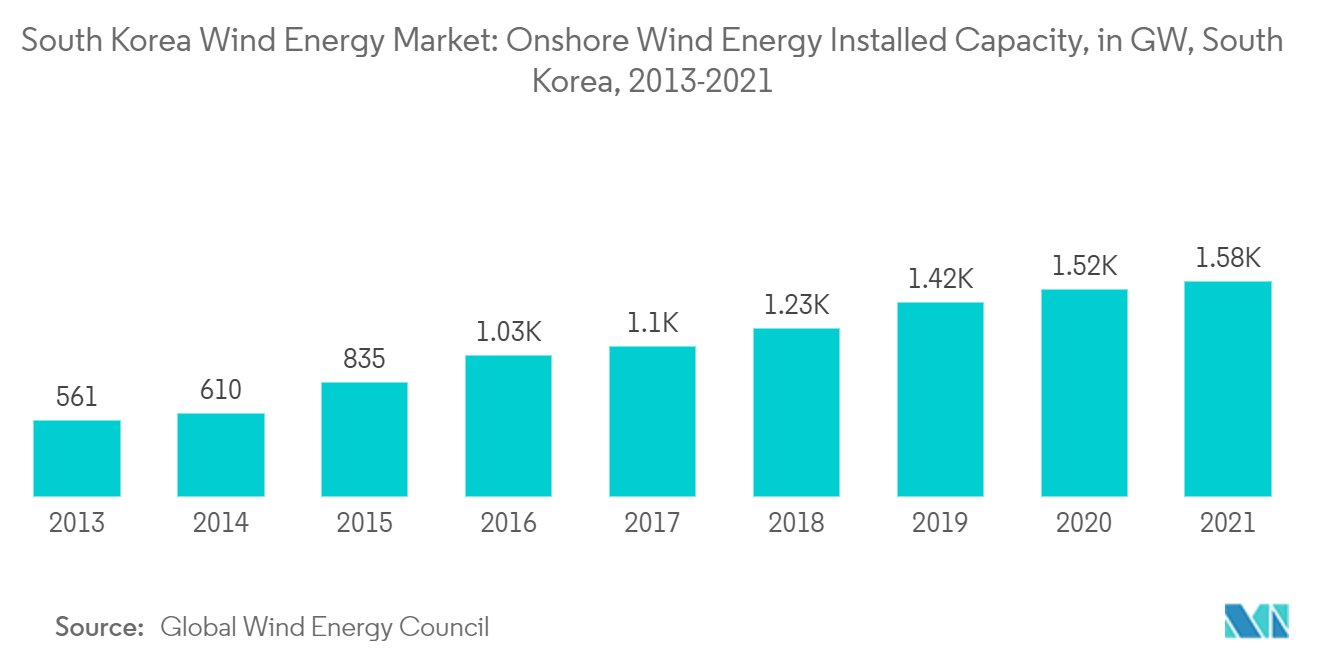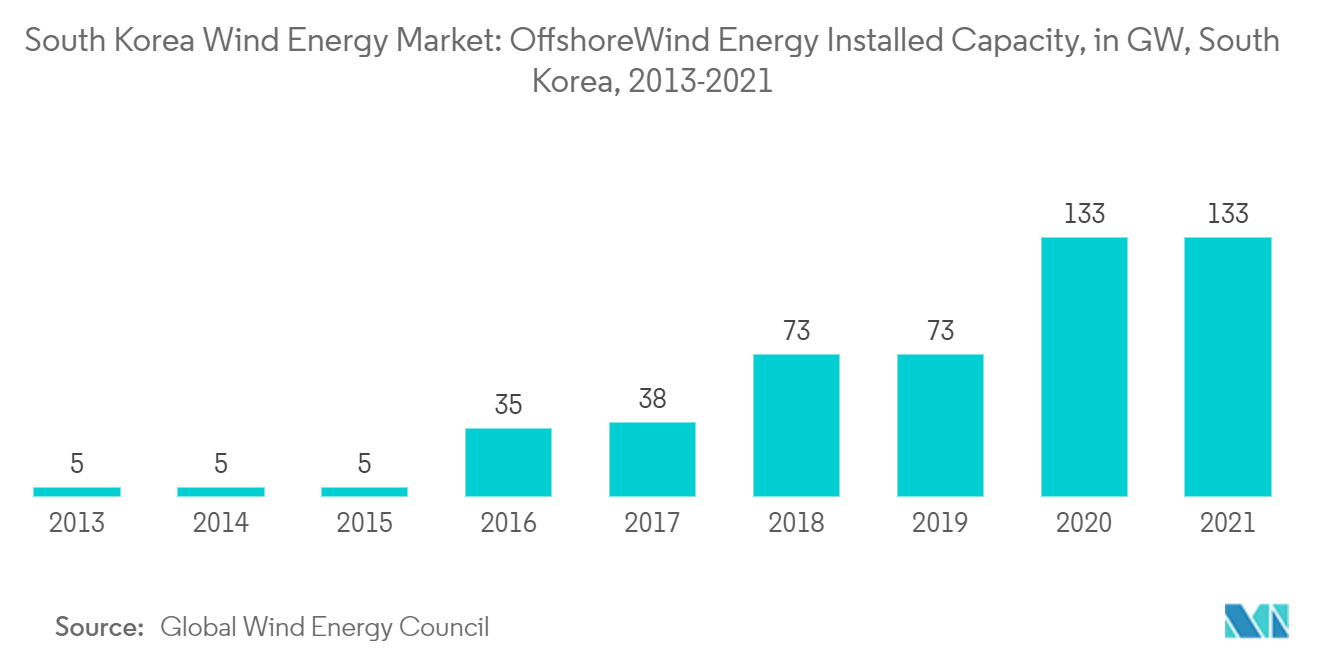Market Trends of South Korea Wind Energy Industry
This section covers the major market trends shaping the South Korea Wind Energy Market according to our research experts:
Onshore Wind Energy is Likely to Dominate the Market
As one of the largest economies in Asia-Pacific, South Korea has been pushing to reduce its heavy reliance on coal and nuclear power. In response to the rising environmental concerns, South Korea plans to boost the share of renewable power generation to as much as 35% by 2040. Further, the country's pledge to reach net zero by 2050 was a significant pronouncement from an Asian industrial powerhouse.
According to the country's third Energy Master Plan (EMP) 2019, the government aims to increase the share of renewable power from 6.5% to 20% by 2030 and 30-35% by 2040.
Onshore wind energy is the prominent segment in the South Korean wind energy sector that holds nearly 1.57 GW of installed capacity as of 2021. With an increase in demand for cleaner energy, the segment is expected to grow further with the implementation of new onshore wind projects.
Onshore wind turbines are easier to install and are low in investment compared to offshore. According to the Energy Information Administration (EIA), offshore wind is 2.6 times more expensive than onshore wind power. It is 3.4 times more expensive than power produced by a natural gas combined-cycle plant.
In July 2022, Total Eren, a renewable energy Independent Power Producer ('IPP'), announced the launch of construction and successful Financial Close of the 'Parang Wind Farm' with a capacity of 16.7 MW, together with its partners WEEN E&S and Korea Midland Power. The Parang Project is going to be located in Yeong-deok, on the East Coast of South Korea.
Thus, the completion of the under-construction and planned projects is likely to increase the overall onshore installed capacity and is expected to dominate the wind energy market of the country.

Upcoming Offshore Wind Projects to Drive the Market
The country has large onshore wind potential, but development has faced problems with complex permitting, local opposition, and growing grid connectivity issues. Thus, while onshore wind capacity is expected to increase, South Korea is turning to offshore wind as the big game changer, announcing some of the most ambitious projects in the world.
South Korea targets 9.2 GW of wind power by 2025 and 16 GW by 2030, of which 12 GW will comprise offshore wind. This may be an over-reach, considering the 1.579 GW of onshore wind and 133 MW of offshore wind installed in 2021. Although no new offshore wind projects were commissioned in South Korea in 2021, land-use constraints are shifting the focus from renewable energy to offshore wind power.
In June 2022, Siemens Gamesa and Doosan Enerbility signed a memorandum of understanding (MOU) concerning cooperation in offshore wind power activities in South Korea. This covers a potential collaboration in large-scale offshore wind turbines, construction of new production facilities, supply of wind turbine parts, offshore wind turbine installation, and turbine maintenance.
In January 2022, TUV SÜD Korea and Shinan-gun, a county on South Korea's southwest coast, signed a Memorandum of Understanding (MOU) with KEPCO KPS (Korea Electric Power Corporation's Plant Service & Engineering) to assist with the establishment of a plant operation and maintenance ecosystem for Shinan offshore wind farm. In the Shinan wind farm zone, up to 8.2 gigawatts of electricity are expected to be generated.
In January 2022, Ørsted signed a memorandum of understanding (MoU) with Korean state-owned utilities Korea Southern Power (KOSPO) and Korea Midland Power (KOMIPO) for the development of the 1.6 GW Incheon offshore wind project.
In October 2022, Elenergy Co. Ltd, a Korean renewable energy development company, appointed DNV as the owner's engineer for its 1.5 GW fixed-bottom Chujin offshore wind project. When completed in 2027, Chujin will be the world's largest commercial-scale offshore wind farm. DNV will be the owner's engineer responsible for driving the pre-Front End Engineering Design (FEED) and supervising contractors during the final design, procurement, construction, commissioning, and operation phases of the project to mitigate risks and prepare optimal solutions.
Moreover, with rising challenges like limited onshore land for setup onshore wind farms, the government concentration toward offshore is growing. It is likely to invest KRW multi-trillion toward R&D of wind technology, which will develop the offshore sector during the upcoming years.


